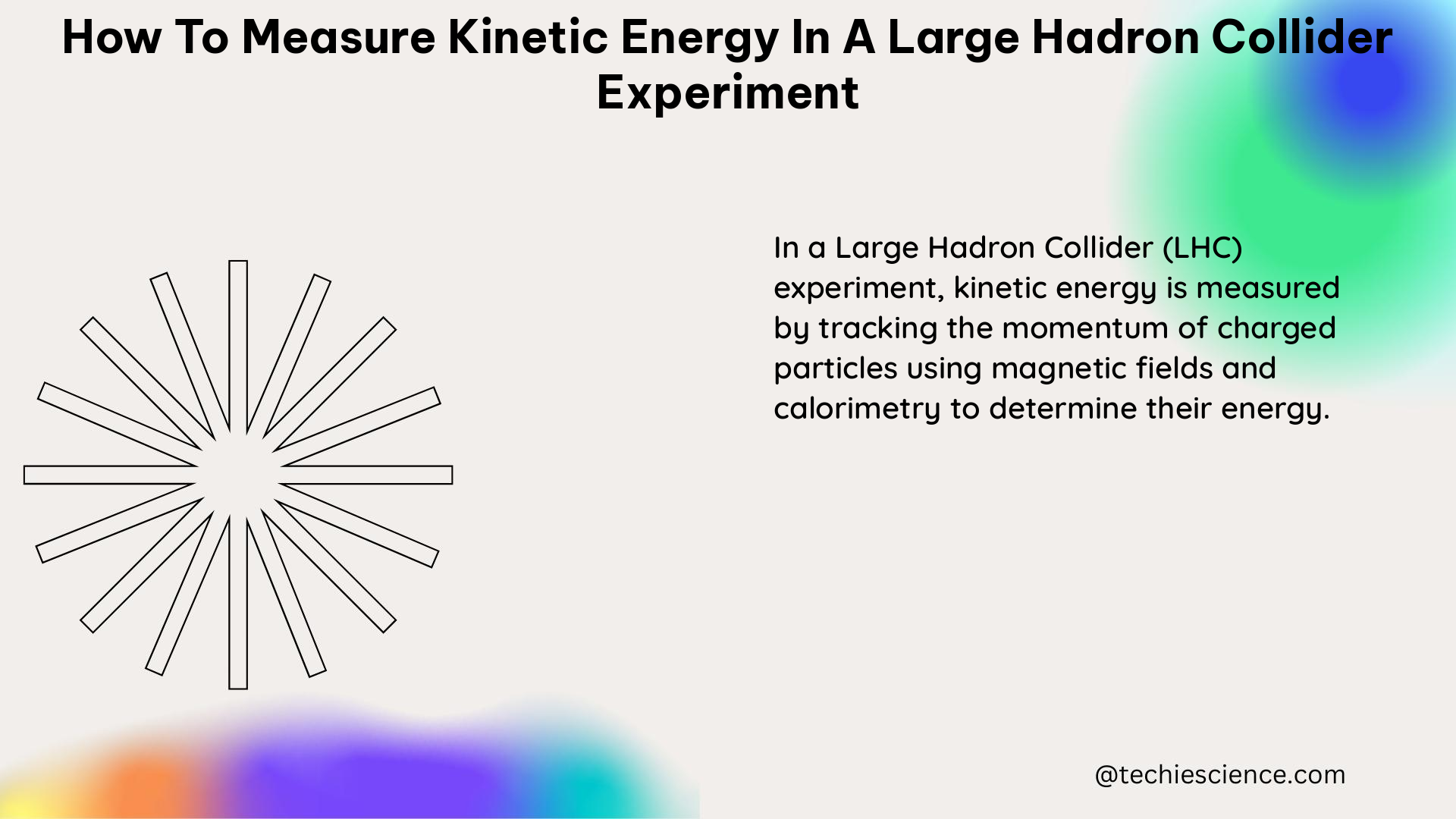The Large Hadron Collider (LHC) is a remarkable feat of engineering and scientific exploration, designed to push the boundaries of our understanding of the fundamental nature of the universe. At the heart of this endeavor lies the measurement of kinetic energy, a crucial parameter in unraveling the mysteries of particle physics. In this comprehensive guide, we will delve into the intricate details of how to measure kinetic energy in a Large Hadron Collider experiment.
Understanding Relativistic Kinetic Energy
In the LHC, particles are accelerated to incredibly high energies, reaching velocities close to the speed of light. At these speeds, the classical formula for kinetic energy, KE = 1/2 * m * v^2, is no longer valid. Instead, we must employ the principles of relativistic mechanics, which account for the effects of special relativity.
The relativistic formula for kinetic energy is:
KE = (m * c^2) / sqrt(1 – v^2/c^2) – m * c^2
Where:
– m is the rest mass of the particle
– c is the speed of light
– v is the velocity of the particle
This formula takes into account the increase in the particle’s mass as it approaches the speed of light, a phenomenon known as relativistic mass.
Measuring Particle Mass and Velocity

To calculate the kinetic energy of particles in the LHC, we need to accurately measure their mass and velocity.
Measuring Particle Mass
The mass of a particle can be determined using various techniques, such as:
1. Direct Measurement: The mass of a particle can be directly measured using specialized equipment, such as a mass spectrometer.
2. Indirect Measurement: The mass of a particle can be inferred from its interactions with other particles or fields, such as the energy required to create the particle in a collision.
In the LHC, the mass of the protons is approximately 1.6726219 × 10^-27 kg.
Measuring Particle Velocity
The velocity of particles in the LHC can be measured using the time-of-flight method. This involves:
1. Measuring the time it takes for a particle to travel a known distance.
2. Calculating the velocity using the formula: v = d/t, where d is the distance traveled, and t is the time taken.
The LHC is designed to accelerate protons to an energy of 6.5 TeV, corresponding to a velocity of approximately 0.999999990c, where c is the speed of light.
Calculating Kinetic Energy
Once we have the mass and velocity of the particles, we can use the relativistic formula to calculate their kinetic energy:
KE = (m * c^2) / sqrt(1 – v^2/c^2) – m * c^2
For example, at an energy of 6.5 TeV, the kinetic energy of a proton in the LHC is approximately 7.02 × 10^-6 Joules.
Measuring Total Collision Energy
In addition to measuring the kinetic energy of individual particles, the LHC also measures the total energy of the collisions. This is done by:
- Measuring the Energy and Momentum of Particles: The ATLAS and CMS experiments at the LHC use a combination of calorimeters and tracking detectors to measure the energy and momentum of the particles produced in the collisions.
- Calculating the Total Energy: The total energy of the collision is calculated by summing the energies of all the particles produced.
This allows researchers to study the properties of the particles produced and test theories of particle physics, ultimately advancing our understanding of the fundamental nature of matter and energy.
Practical Considerations and Challenges
Measuring kinetic energy in the LHC is not without its challenges. Some key considerations include:
- Detector Limitations: The accuracy of the measurements is limited by the capabilities of the detectors used, such as their resolution, efficiency, and coverage.
- Particle Interactions: The complex interactions between particles in the collisions can make it difficult to accurately measure their individual properties.
- Data Analysis: The vast amount of data generated by the LHC experiments requires sophisticated data analysis techniques to extract meaningful insights.
Researchers at the LHC are constantly working to overcome these challenges and improve the precision and reliability of their measurements.
Conclusion
Measuring kinetic energy in a Large Hadron Collider experiment is a complex and fascinating endeavor, requiring a deep understanding of relativistic mechanics, particle physics, and advanced experimental techniques. By accurately measuring the mass and velocity of particles, and the total energy of collisions, researchers at the LHC are pushing the boundaries of our knowledge and unlocking the secrets of the universe.
References:
– Large Hadron Collider – Wikipedia, https://en.wikipedia.org/wiki/LHC
– Eli5: What does the Large Hadron Collider do and how does it work? – Reddit, https://www.reddit.com/r/explainlikeimfive/comments/17w1q2r/eli5_what_does_the_large_hadron_collider_do_and/
– LHC the guide – CERN, http://cds.cern.ch/record/2255762/files/CERN-Brochure-2017-002-Eng.pdf
– Accelerators | CERN, https://home.cern/science/accelerators
– Facts and figures about the LHC – CERN, https://home.cern/resources/faqs/facts-and-figures-about-lhc

The lambdageeks.com Core SME Team is a group of experienced subject matter experts from diverse scientific and technical fields including Physics, Chemistry, Technology,Electronics & Electrical Engineering, Automotive, Mechanical Engineering. Our team collaborates to create high-quality, well-researched articles on a wide range of science and technology topics for the lambdageeks.com website.
All Our Senior SME are having more than 7 Years of experience in the respective fields . They are either Working Industry Professionals or assocaited With different Universities. Refer Our Authors Page to get to know About our Core SMEs.